-
 Bitcoin
Bitcoin $90,752.5471
4.27% -
 Ethereum
Ethereum $1,688.3053
6.41% -
 Tether USDt
Tether USDt $1.0006
0.08% -
 XRP
XRP $2.1453
3.23% -
 BNB
BNB $607.1447
1.71% -
 Solana
Solana $144.2444
7.14% -
 USDC
USDC $0.9997
-0.01% -
 Dogecoin
Dogecoin $0.1703
8.31% -
 TRON
TRON $0.2467
1.46% -
 Cardano
Cardano $0.6557
5.58% -
 Chainlink
Chainlink $13.7511
5.08% -
 Avalanche
Avalanche $21.5976
7.79% -
 UNUS SED LEO
UNUS SED LEO $8.9863
-1.47% -
 Stellar
Stellar $0.2566
1.55% -
 Sui
Sui $2.3975
10.43% -
 Shiba Inu
Shiba Inu $0.0...01300
5.63% -
 Toncoin
Toncoin $2.9806
2.64% -
 Hedera
Hedera $0.1760
4.31% -
 Bitcoin Cash
Bitcoin Cash $355.4488
3.40% -
 Litecoin
Litecoin $82.9174
5.86% -
 Hyperliquid
Hyperliquid $18.6132
6.14% -
 Polkadot
Polkadot $3.8737
1.18% -
 Dai
Dai $0.9998
0.01% -
 Bitget Token
Bitget Token $4.5191
1.97% -
 Ethena USDe
Ethena USDe $0.9996
0.04% -
 Pi
Pi $0.6386
1.01% -
 Monero
Monero $220.4697
3.17% -
 Pepe
Pepe $0.0...08356
7.90% -
 Uniswap
Uniswap $5.5839
5.52% -
 Aptos
Aptos $5.0800
1.52%
What is the PoH consensus mechanism of blockchain?
PoH, used by Solana, embeds time into the blockchain using VDFs, enhancing transaction speed and scalability while reducing energy use compared to PoW.
Apr 12, 2025 at 09:29 am

The Proof of History (PoH) consensus mechanism is a unique approach to achieving consensus in blockchain networks, primarily developed and utilized by the Solana blockchain. Unlike traditional consensus mechanisms such as Proof of Work (PoW) or Proof of Stake (PoS), PoH focuses on creating a verifiable and chronological record of events within the blockchain. This mechanism is designed to enhance the speed and efficiency of transaction processing, making it a key component in the architecture of high-performance blockchains.
Understanding Proof of History
Proof of History (PoH) is a method that embeds the passage of time directly into the blockchain. This is achieved through the use of a verifiable delay function (VDF), which generates a sequence of hashes that can only be produced sequentially. Each hash in the sequence depends on the previous hash, ensuring that the sequence cannot be generated faster than the time it takes to compute each hash. This creates a historical record that is both verifiable and cryptographically secure.
The primary purpose of PoH is to provide a way for nodes in the network to agree on the time and order of events without the need for a centralized timekeeper. By embedding time directly into the blockchain, PoH reduces the need for complex consensus algorithms, allowing for faster transaction processing and increased scalability.
How PoH Works
To understand how PoH works, it is essential to delve into the specifics of its operation. The process begins with the creation of a sequence of hashes, each dependent on the previous one. This sequence is generated using a VDF, which ensures that the computation of each hash takes a predictable amount of time.
- Initialization: The process starts with an initial state, often a simple number or a hash of some initial data.
- Hashing: The initial state is then hashed using a cryptographic hash function, producing a new hash.
- Sequence Generation: This new hash becomes the input for the next hash in the sequence, and the process continues iteratively.
- Verification: Any node in the network can verify the sequence by recomputing the hashes and checking that they match the recorded sequence.
By generating this sequence, PoH creates a verifiable record of time that can be used to timestamp transactions and other events on the blockchain. This timestamping allows nodes to agree on the order of transactions without the need for a centralized authority.
Advantages of PoH
The use of PoH in blockchain networks offers several significant advantages. One of the most notable benefits is the increased transaction throughput. By embedding time directly into the blockchain, PoH eliminates the need for nodes to communicate with each other to agree on the order of transactions, which can be a bottleneck in other consensus mechanisms.
Another advantage is improved scalability. PoH allows for the processing of transactions in parallel, which can significantly increase the number of transactions that the network can handle per second. This makes PoH particularly well-suited for applications that require high transaction speeds, such as decentralized finance (DeFi) and gaming.
Additionally, PoH offers enhanced security. The use of a VDF ensures that the sequence of hashes is computationally intensive to generate, making it difficult for malicious actors to manipulate the timeline. This adds an extra layer of security to the blockchain, making it more resistant to attacks.
PoH vs. Other Consensus Mechanisms
Comparing PoH to other consensus mechanisms can help highlight its unique features and advantages. Proof of Work (PoW) requires miners to solve complex mathematical puzzles to validate transactions and add them to the blockchain. This process is energy-intensive and can lead to slower transaction processing times.
Proof of Stake (PoS), on the other hand, selects validators based on the number of coins they hold and are willing to "stake" as collateral. While PoS is more energy-efficient than PoW, it still requires nodes to communicate with each other to agree on the order of transactions, which can limit scalability.
In contrast, PoH uses a verifiable delay function to create a chronological record of events, allowing nodes to agree on the order of transactions without the need for extensive communication. This makes PoH more efficient and scalable than both PoW and PoS.
Implementation of PoH in Solana
Solana is one of the most prominent blockchains that utilizes the PoH consensus mechanism. The implementation of PoH in Solana is designed to maximize transaction throughput and minimize latency, making it an attractive platform for developers and users alike.
- Transaction Processing: In Solana, transactions are processed in parallel, with PoH providing the necessary timestamps to ensure that transactions are ordered correctly. This parallel processing allows Solana to achieve high transaction speeds, often exceeding 50,000 transactions per second.
- Network Synchronization: PoH helps synchronize the network by providing a common timeline that all nodes can reference. This synchronization is crucial for maintaining the integrity of the blockchain and ensuring that all nodes have a consistent view of the network state.
- Scalability: The use of PoH in Solana contributes to its scalability, allowing the network to handle a large number of transactions without compromising performance. This scalability is a key factor in Solana's appeal to developers building decentralized applications.
Challenges and Considerations
While PoH offers numerous advantages, it is not without its challenges. One of the primary concerns is the complexity of implementing VDFs. The use of VDFs requires specialized hardware and can be computationally intensive, which may limit the number of nodes that can participate in the network.
Another consideration is the reliance on a single timeline. PoH creates a single, verifiable timeline that all nodes must agree on. If there is a discrepancy in the timeline, it can lead to network forks, which can be difficult to resolve. Ensuring the integrity of the timeline is crucial for the stability of the network.
Additionally, security concerns related to the VDF itself need to be addressed. While the use of a VDF adds security to the timeline, it also introduces new attack vectors that need to be mitigated. Ensuring the security of the VDF is essential for maintaining the trust and reliability of the blockchain.
Frequently Asked Questions
Q: Can PoH be used in conjunction with other consensus mechanisms?
A: Yes, PoH can be used in conjunction with other consensus mechanisms to enhance the overall performance and security of a blockchain network. For example, PoH can be used to timestamp transactions, while another mechanism, such as PoS, can be used to validate and add those transactions to the blockchain.
Q: How does PoH impact the energy consumption of a blockchain network?
A: PoH is generally more energy-efficient than PoW, as it does not require the same level of computational power to solve complex puzzles. However, the use of VDFs can still be computationally intensive, and the overall energy consumption will depend on the specific implementation and the hardware used.
Q: What are the potential risks associated with the use of PoH?
A: The primary risks associated with PoH include the complexity of implementing VDFs, the potential for network forks due to discrepancies in the timeline, and security concerns related to the VDF itself. Addressing these risks requires careful design and implementation of the PoH mechanism.
Q: How does PoH contribute to the decentralization of a blockchain network?
A: PoH contributes to decentralization by allowing nodes to agree on the order of transactions without the need for a centralized timekeeper. This reduces the reliance on a central authority and enhances the autonomy of individual nodes, promoting a more decentralized network structure.
Disclaimer:info@kdj.com
The information provided is not trading advice. kdj.com does not assume any responsibility for any investments made based on the information provided in this article. Cryptocurrencies are highly volatile and it is highly recommended that you invest with caution after thorough research!
If you believe that the content used on this website infringes your copyright, please contact us immediately (info@kdj.com) and we will delete it promptly.
- Bitcoin (BTC) Price Surges to Two-Week High, Breaking Above $90,000
- 2025-04-23 01:00:12
- Popcat (POP) Price Soars Over 20% As Investors Rush To Buy The Meme Coin
- 2025-04-23 01:00:12
- Bitcoin (BTC) hits six-week highs as US trade war tensions embolden crypto bulls
- 2025-04-23 00:55:12
- An Encouraging Situation for Polygon
- 2025-04-23 00:55:12
- The European Central Bank (ECB) is the alarm about President Trump's policy
- 2025-04-23 00:50:12
- SUBBD Token Aims to Disrupt the $85000000000 Content Creation Market by Targeting OnlyFans
- 2025-04-23 00:50:12
Related knowledge
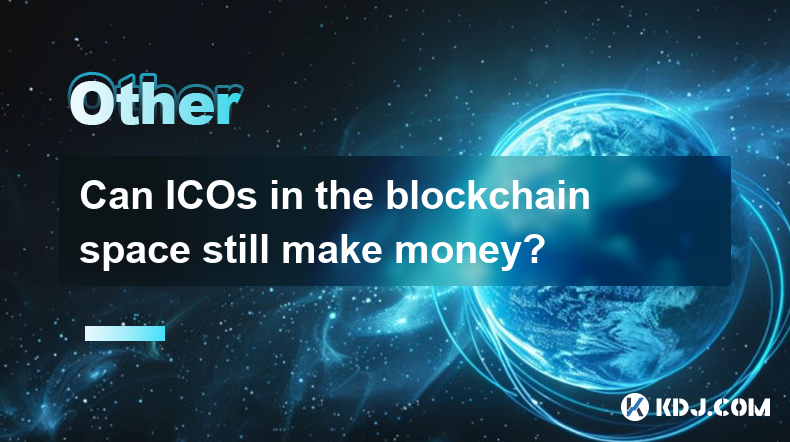
Can ICOs in the blockchain space still make money?
Apr 17,2025 at 08:29pm
The landscape of Initial Coin Offerings (ICOs) in the blockchain space has evolved significantly since their peak in 2017 and 2018. Despite the increased regulatory scrutiny and the rise of alternative fundraising methods like Security Token Offerings (STOs) and Initial Exchange Offerings (IEOs), ICOs can still be a viable way to raise funds and generat...

Can the application of blockchain in supply chain finance bring benefits?
Apr 15,2025 at 04:00pm
Can the application of blockchain in supply chain finance bring benefits? The integration of blockchain technology into supply chain finance has garnered significant attention in the cryptocurrency and financial sectors. This article explores how blockchain can potentially revolutionize supply chain finance, detailing its benefits and providing a compre...
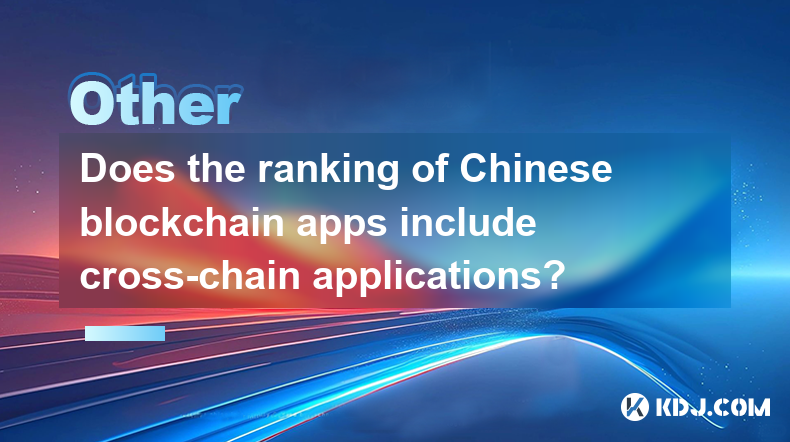
Does the ranking of Chinese blockchain apps include cross-chain applications?
Apr 14,2025 at 04:00pm
The ranking of Chinese blockchain apps is a comprehensive evaluation that takes into account various aspects such as user base, transaction volume, and technological innovation. A pertinent question arises regarding whether these rankings include cross-chain applications. Cross-chain applications, which allow different blockchain networks to interact an...
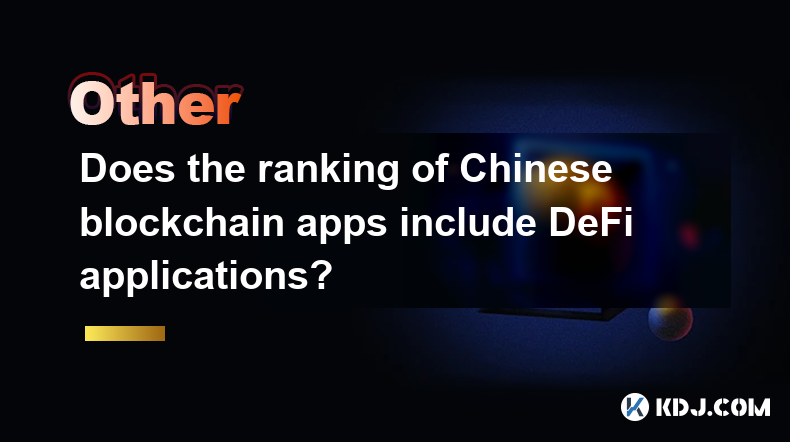
Does the ranking of Chinese blockchain apps include DeFi applications?
Apr 15,2025 at 06:57am
The ranking of Chinese blockchain apps is a comprehensive list that showcases the most popular and influential applications within the cryptocurrency ecosystem. One question that often arises is whether these rankings include DeFi applications. To answer this, we need to delve into the specifics of how these rankings are compiled and what types of appli...
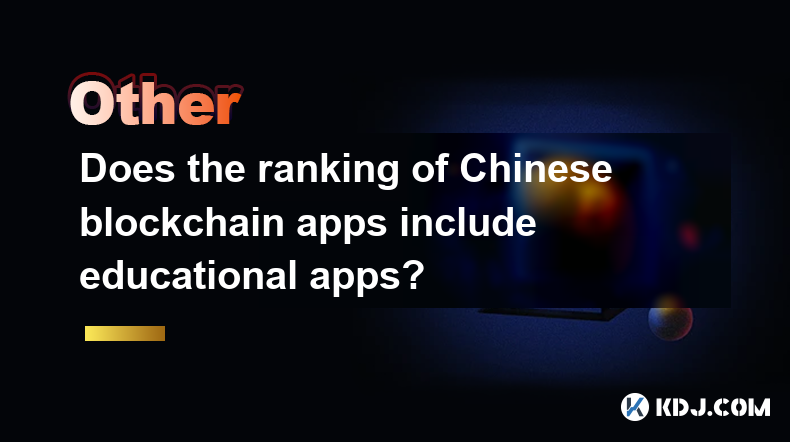
Does the ranking of Chinese blockchain apps include educational apps?
Apr 16,2025 at 03:35am
The ranking of Chinese blockchain apps often includes a variety of categories, from finance and gaming to social networking and beyond. One question that frequently arises is whether these rankings include educational apps. To address this, we need to delve into the specifics of how blockchain apps are categorized and ranked in China, and whether educat...
Does the ranking of Chinese blockchain apps include enterprise-level applications?
Apr 15,2025 at 06:42am
The ranking of Chinese blockchain apps often includes a variety of applications, ranging from consumer-focused to enterprise-level solutions. Understanding the scope and criteria for these rankings is essential to determine if enterprise-level applications are included. This article delves into the specifics of how Chinese blockchain app rankings are co...

Can ICOs in the blockchain space still make money?
Apr 17,2025 at 08:29pm
The landscape of Initial Coin Offerings (ICOs) in the blockchain space has evolved significantly since their peak in 2017 and 2018. Despite the increased regulatory scrutiny and the rise of alternative fundraising methods like Security Token Offerings (STOs) and Initial Exchange Offerings (IEOs), ICOs can still be a viable way to raise funds and generat...

Can the application of blockchain in supply chain finance bring benefits?
Apr 15,2025 at 04:00pm
Can the application of blockchain in supply chain finance bring benefits? The integration of blockchain technology into supply chain finance has garnered significant attention in the cryptocurrency and financial sectors. This article explores how blockchain can potentially revolutionize supply chain finance, detailing its benefits and providing a compre...

Does the ranking of Chinese blockchain apps include cross-chain applications?
Apr 14,2025 at 04:00pm
The ranking of Chinese blockchain apps is a comprehensive evaluation that takes into account various aspects such as user base, transaction volume, and technological innovation. A pertinent question arises regarding whether these rankings include cross-chain applications. Cross-chain applications, which allow different blockchain networks to interact an...

Does the ranking of Chinese blockchain apps include DeFi applications?
Apr 15,2025 at 06:57am
The ranking of Chinese blockchain apps is a comprehensive list that showcases the most popular and influential applications within the cryptocurrency ecosystem. One question that often arises is whether these rankings include DeFi applications. To answer this, we need to delve into the specifics of how these rankings are compiled and what types of appli...

Does the ranking of Chinese blockchain apps include educational apps?
Apr 16,2025 at 03:35am
The ranking of Chinese blockchain apps often includes a variety of categories, from finance and gaming to social networking and beyond. One question that frequently arises is whether these rankings include educational apps. To address this, we need to delve into the specifics of how blockchain apps are categorized and ranked in China, and whether educat...

Does the ranking of Chinese blockchain apps include enterprise-level applications?
Apr 15,2025 at 06:42am
The ranking of Chinese blockchain apps often includes a variety of applications, ranging from consumer-focused to enterprise-level solutions. Understanding the scope and criteria for these rankings is essential to determine if enterprise-level applications are included. This article delves into the specifics of how Chinese blockchain app rankings are co...
See all articles























































































